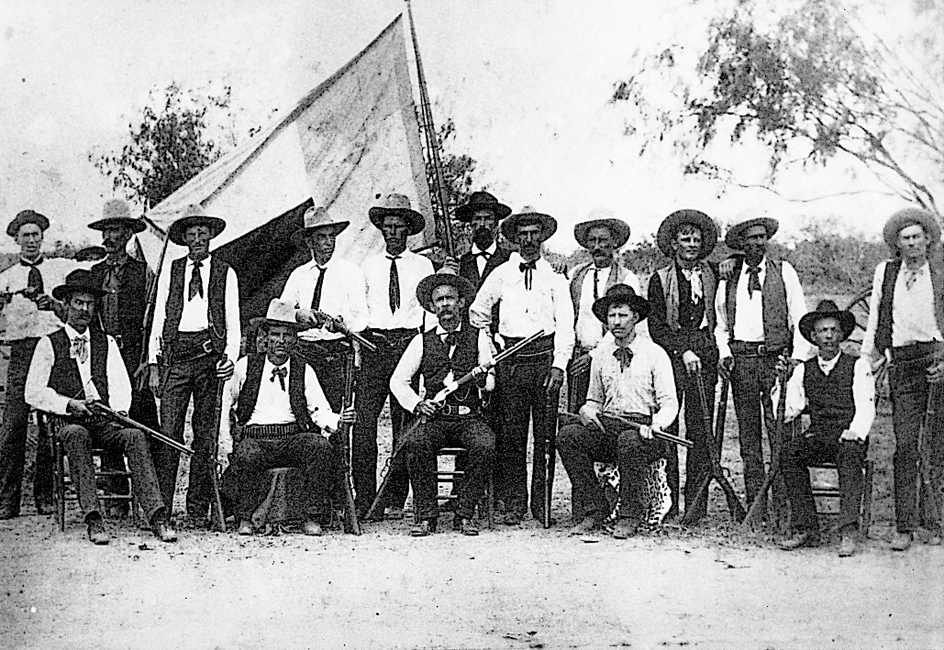Texas Rangers are special police officers of the state of Texas. They serve under the authority of the Texas Department of Public Safety. One noted Ranger summarized their qualities in these words: “The Texas Rangers can ride like a Mexican, trail like an Indian, shoot like a Tennessean, and fight like a very devil.” The Rangers have a tradition of individualism, resourcefulness, and self-reliance. They wear no official uniforms and furnish their own clothing. The state provides weapons and transportation. But Rangers may carry their own weapons, and they ride their own horses.
Early days.
The Rangers were originally a band of mounted riflemen. As early as 1826, Stephen F. Austin formed bands of “rangers” to protect American settlers along the Brazos River from Indian warriors and Mexican bandits.

In 1835, the Texas Consultation, an unofficial government of Texas, formally organized the Rangers and assigned them the task of defending the frontier against Indians. One company of 25 men patrolled east of the Trinity River. Later, other companies worked in the areas between the Trinity and the Brazos, and between the Brazos and Colorado rivers.
The Rangers adopted the practices of their enemies. The Comanche Indians, with their speed and courage, set the pattern of Plains warfare. The Rangers learned the Indian skills of horsemanship, woodcraft, and direction finding. They were excellent marksmen, and adopted the revolving six-shooter as their standard weapon.
After Texas gained its independence in 1836, it faced a Mexican and Indian danger on a 1,000-mile (1,600-kilometer) frontier. With a population of about 400,000, it could not afford a standing army. Texas required a fighting force that was small and inexpensive, available in time of need but inactive when not needed. The Texas Rangers, without uniforms, drill, or regular pay, met these requirements. The Rangers served as a mobile and efficient frontier defense organization.
After Texas joined the Union in 1845, the Rangers continued to play a major role in the defense of the frontier. During the Mexican War (1846-1848), a group of Rangers performed valuable services as scouts and guerrilla fighters with the American armies in Mexico. When the federal government established forts along the Texas frontier and garrisoned them with regular troops, Texans still placed their faith in the Rangers. Sam Houston once said in the U.S. Senate: “Give us 1,000 Rangers, and we will be responsible for the defense of our frontier. … We ask no regular troops; withdraw them if you please. I ask this not through any unkindness to them, but because they have not the efficiency for frontier service.”
Later history.
During the Reconstruction period that followed the American Civil War, Texas suffered from lawlessness, murder, and Indian raids. In 1874, 450 Texas Rangers received commissions as peace officers. They continued to fight the Comanche along the northern border and Mexican cattle thieves along the Rio Grande. They also tracked down murderers, smugglers, bank and train robbers, and mine bandits. Within 10 years, they restored peace and quiet to the interior of Texas. In 1917 and 1918, they succeeded in clearing the rocky Big Bend region of outlaws.
Today, the Rangers use modern methods to investigate crimes. But they still ride horses in pursuit of lawbreakers in rugged areas.
